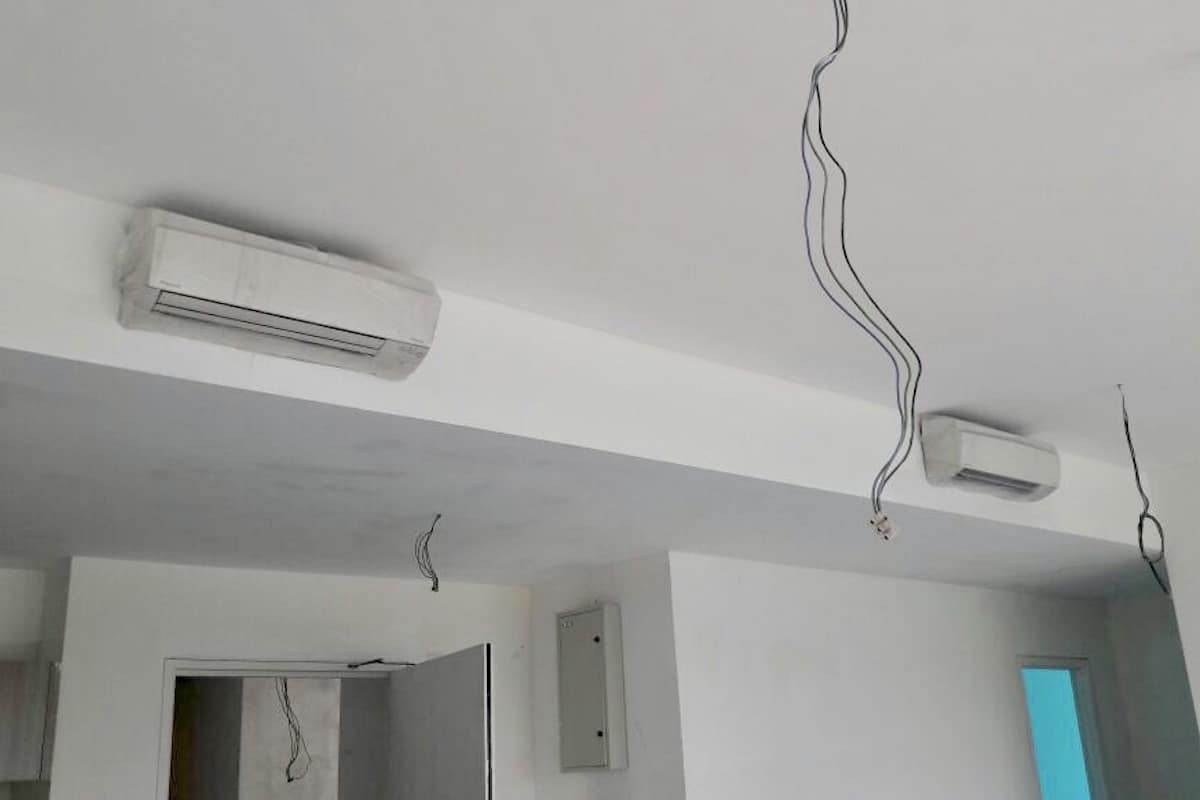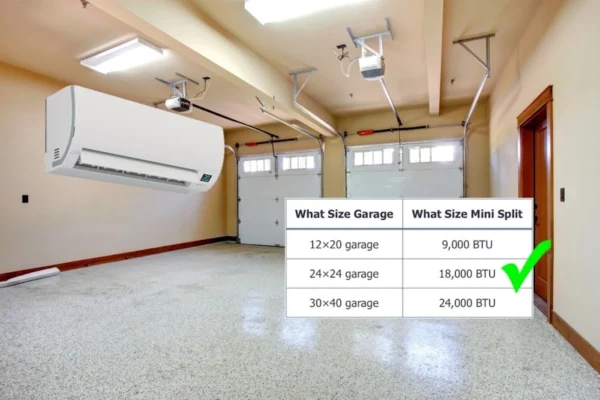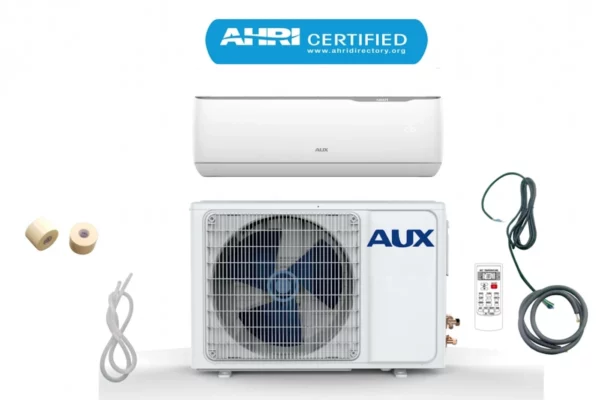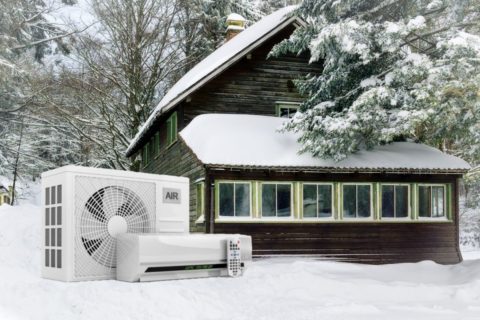Are Mini Splits Good for New Construction?
Mini splits are getting popular nowadays. People building new homes have heard about the benefits of the mini split system. However, they are not quite familiar with it. So, are mini splits good for new construction?
Mini splits are good for new construction because they are able to provide more comfort while saving energy. Mini splits are more energy efficient than central air and thus, they can increase the home value. New construction can better conceal the mini split air conditioning system for improved aesthetics.
Many people replace their HVAC system from a central air to mini splits to reduce energy cost but are left with not good-looking mini split lines on the wall. In new construction, this problem can be solved.
Why Mini Splits are Good for New Construction?
Mini splits have better advantages over central air conditioners. Mainly, mini splits have an average energy efficiency rating of 20-24 SEER while central air conditioners are around 16-18 SEER which is about 30% more efficient.
So, in existing homes, mini splits save you energy cost. But then, the benefit of mini splits can be fully realized in new construction.
Concealing Mini Split Lines
The central air conditioning system in homes is often concealed. The furnace is usually located either in the attic, in the basement or in a dedicated room away from the living space. Ductwork including flexible ducts, registers and grilles is either hidden above the ceiling, under the floor or inside the wall.
So, when the central air conditioning system is replaced with mini splits in existing homes, the mini split lines including the refrigerant lines, drain line and wires are often exposed which many people find ugly.
But, if a newly constructed home is designed to use mini splits for heating and cooling, the mini split lines can also be concealed in the wall, above the ceiling or under the floor.
“Houses designed for mini splits can be as luxurious as homes with a central air conditioning system.”
Yu Chang Zhen, aircondlounge
For example, the great room and upstairs (bonus room) which have a relatively larger floor area can use the ceiling ducted type of mini split indoor unit to conceal everything above the ceiling; only the vents are visible just like the central air. The master bedroom can use the ceiling cassette type of mini split indoor unit to achieve a more uniform air distribution while also concealing the lines above the ceiling.
One Mini Split Condenser Unit
Homes with a central air conditioning system have only one condenser unit outside the house. Whereas for mini splits, many people often see 4-5 numbers of outdoor units outside the house which they also find ugly.
However, the multi-zone mini split system which allows multiple indoor units to be connected to a single outdoor unit can eliminate the need for multiple outdoor units.
In existing homes, the multi-zone mini split system is often hard to deploy due to the lack of a suitable place (or rather, nice looking place) to run the refrigerant lines and install the condenser unit.
On the other hand, new construction can reserve space for the multi-zone mini split system.
Several sets of refrigerant lines, drain lines and wires can be strategically run in the same place towards the condenser unit. This improves the accessibility, serviceability and reliability of the mini split system.
By the way, if you want to learn more about mini split especially how to design it for your house, consider my Mini Split (eBook). You’ll learn what is Mini Split, how to choose and more importantly, spark more design ideas to improve the energy efficient of your house. But, if you need a second opinion or want someone to help you design, then you can consider my consultation service.
Consultation Service
Ask me for HVAC advice such as brand selection, best model, benefits, features, placement, duct size, grille size, how to design, design check, verification and other HVAC related queries.
HVAC for New Construction: Mini Split vs Central Air
When building a new home, the heating and cooling system often comes down to either sticking back to the conventional central air conditioning system or trying out the new mini split system. So, how do mini splits compare to a central air in new construction?
- Initial & Operating Cost – In certain places, the initial cost of whole house mini splits can be more expensive than a central air conditioning system due to unfamiliarity. However, the operating cost with mini splits is lower.
- Energy Usage – Homes with a central air conditioning system are constantly heating or cooling unoccupied rooms such as the great room while you’re sleeping in the bedroom. With mini splits, you only heat and cool occupied rooms and hence, reducing energy usage tremendously.
- Space Requirement – Mini splits are compact and thus, they can be installed above the ceiling. So, the attic or basement space that is normally used to put the central air handler can now be turned into a useful living space.
- Heating & Cooling Performance – Double-story houses often struggle to have balanced heating and cooling between upstairs and downstairs with the central air conditioning system. With mini splits, each room has independent temperature controls. Hence, the heating and cooling performance in homes with mini splits are better.
- Home Value Contribution – Mini splits are fundamentally more energy efficient than central air conditioners. The monthly electricity cost with mini splits will be lower. Furthermore, more and more people are switching to mini splits nowadays. Hence, homes with mini splits can be more valuable in the future.
- Maintenance – Mini splits and central air conditioners are serviced and maintained the same way. However, each mini split has its own filter. Hence, more filters need to be cleaned regularly for mini splits but do not require a replacement.
- Indoor Air Quality – Central air conditioners generally have better air filtration than mini splits due to the construction of the air conditioning unit itself. However, certain types of mini splits can also provide comparable air filtration quality.
- Interior & Exterior Aesthetics – Homes with a central air conditioning system are good-looking because the air conditioning system is concealed. Mini splits often are not concealed but when certain types of mini splits are deployed, they can be as good-looking as the central air system.
- Low Ambient Heating – Homes with a central air conditioning system often use a gas furnace for heating. Heat pumps (central or mini split) struggle to provide adequate heating in cold climates. However, the low ambient type of mini splits can be selected to mitigate the problem.
- Expertise Requirement – Central air conditioning systems involved much more HVAC components than mini splits. Thus, contractors who don’t have a certain level of expertise may not design and install the system properly. Whereas for mini splits, the design and installation process is simpler.
- Long-Term Reliability – Central air conditioning systems use ductwork for air distribution. Over time, dust will collect inside the duct. Besides, as the duct joint rubbers age, they cause duct leakages. Mini splits only use copper tubes and they don’t leak. In addition, new copper tube installation is more feasible. So, mini splits (a simpler system) are more reliable in the long run.
Mini Splits in New Construction
Mini splits are good for existing houses but better for new construction. As mentioned earlier, new construction allows the HVAC system to be tailored for mini splits and thus, the benefits of mini splits can be fully realized.
Following is an example of how a new single-family house can use mini splits to heat and cool the whole house:
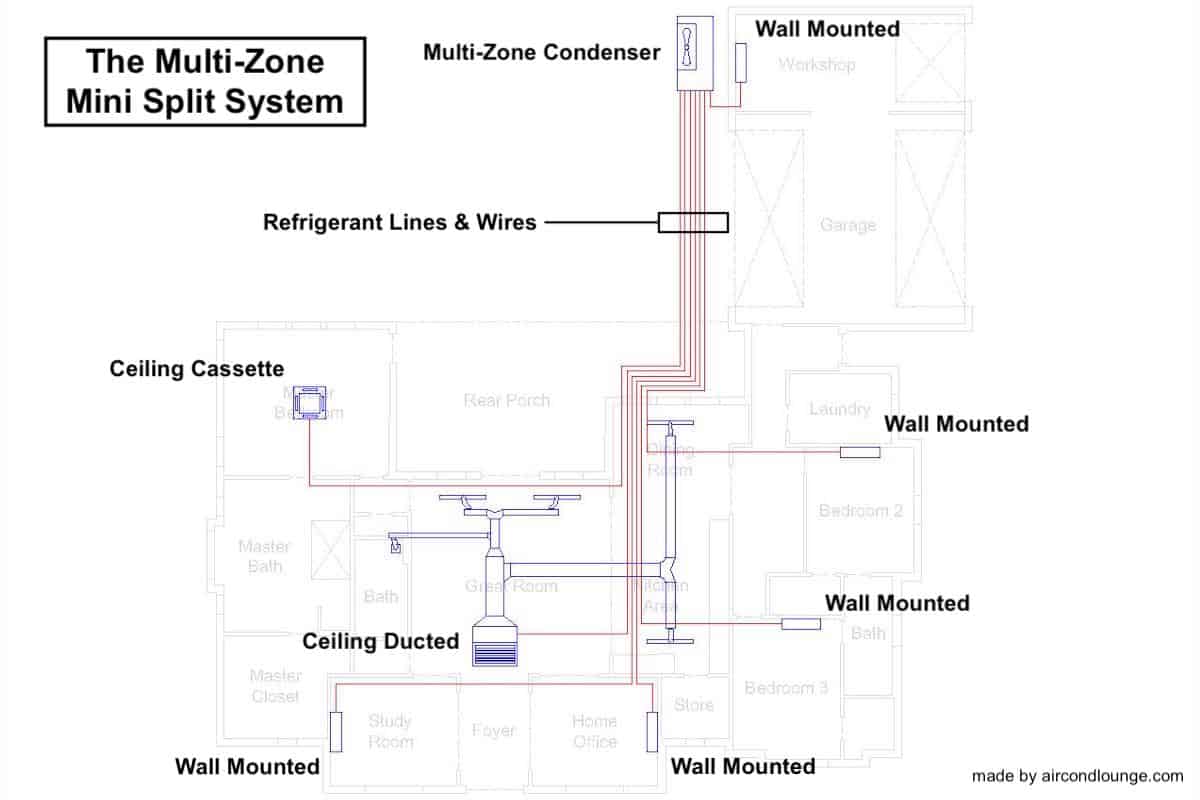
The above house plan illustrates an example of the mini split system in a single-family house. A multi-zone mini split system can be deployed.
The bedroom, workshop, study room and home office are usually small in floor area. Hence, the wall-mounted type of mini split indoor unit can be selected as the head unit to provide heating and cooling.
Next, the master bedroom is often larger in floor area. So, the ceiling cassette type of mini split indoor unit can be selected to provide a 4-way air distribution while keeping the look of the master bedroom elegant.
Finally, the great room, foyer, breakfast and kitchen share the same open area. Hence, the ceiling ducted type of mini split indoor unit can be selected to give a more premium feel to the living space.
As a general rule, the wall-mounted type is preferred for rectangular-shaped rooms while the ceiling cassette type is more suitable for square-shaped rooms.
Mini Split Limitation
The smallest mini split model is mostly 9000 BTU. With the variable speed compressor, the lowest capacity the 9000 BTU mini split can ramp down to is about 4000 BTU.
At 4000 BTU, the smallest room size it is suitable to serve is around 150 sqft.
In other words, rooms that are smaller than 150 sqft are not suitable to have a mini split head unit in them as it may lead to overcooling.
However, when planned carefully, below 150 sqft rooms can still use a mini split for heating and cooling by branching out a small duct from the ceiling ducted type of mini split indoor unit.
For instance, heating and cooling are provided in the bath next to the great room via the ceiling ducted unit in the great room as shown in the above house plan.
Similar to a central air system, no matter how small a room is, adequate heating and cooling can still be provided by the mini split system using the ceiling ducted type.
Conclusion
New construction has an excellent opportunity to use the mini split system for heating and cooling. Existing homes often find it not feasible to switch to the mini split system due to existing ductwork.
In countries like Singapore and Malaysia, almost all new construction including landed houses and high-rise apartment buildings are built with mini splits. Proper space is allocated for the mini split outdoor unit and the mini split lines are concealed inside the wall in some of the more expensive houses.
With the mini split system, heating and cooling in new homes can be more efficient. In addition, thanks to the simplicity of the mini split system, homeowners can now have fewer problems associated with the HVAC system in their home.
Lastly, consider my Mini Split (eBook) if you want to know how can you use Mini Split in your house. If you still have doubt or not feeling confident enough, feel free to consult me.
Consultation Service
Ask me for HVAC advice such as brand selection, best model, benefits, features, placement, duct size, grille size, how to design, design check, verification and other HVAC related queries.
Related Questions
Following are some of the questions related to mini splits in new construction:
- Are Mini Splits Cheaper Than Central Air? In new construction, the initial cost of mini splits is arguably lower than a central air system due to the sheer amount of ductwork needed for the central air. When ductwork cost is excluded, mini splits are often more expensive than a central air conditioner which is what others had suggested.
- Are Mini Splits More Efficient Than Central Air? Mini splits are more efficient than central air conditioners. A typical mini split has an energy efficiency of around 20-24 SEER while a central air conditioner only has around 16-18 SEER. Therefore, a mini split is about 30% more energy efficient than a central air conditioner.
- Do Mini Splits Count as Central Air? Central air is usually referred to as the centralized air conditioning system in homes. The system is often comprised of a split AC condenser unit for cooling and a gas furnace for heating. On the other hand, mini splits are mostly decentralized. Hence, mini splits can’t be counted as central air. However, if a large mini split ducted unit is used to heat and cool the whole house, it may be called as central air.
If you have anything to add (or ask) about this topic, leave a comment down below!


